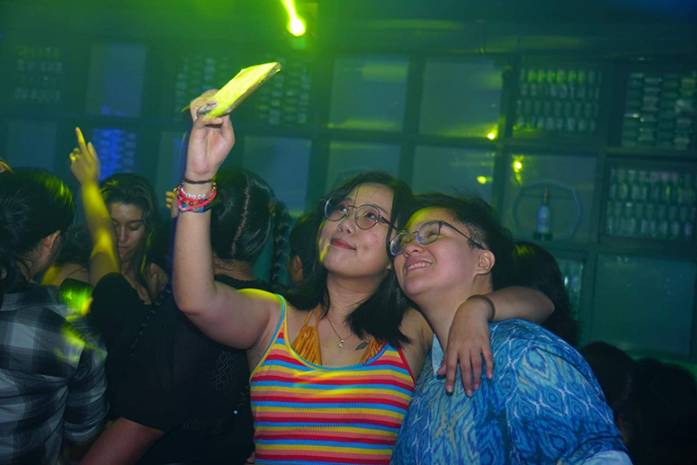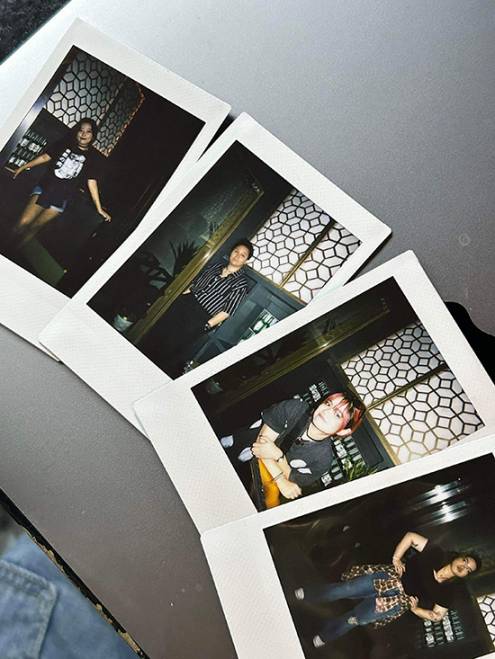Carving out a space for us: Looking for lesbian and sapphic spaces in the Philippines
Where do queer women go to be themselves?
The question has been on my mind for a while. I have frequented queer spaces, from nightclubs to cafes, yet I have never seen a place and community specifically for the queer woman.
It became a fact I could no longer ignore: When I took refuge in a cafe known for its queer events, it was a point of humor for me and my girlfriend to discuss the lack of lesbian safe spaces while surrounded by paintings of penises. I wanted to see queer women, and be seen as one of them. I wanted our collective experiences, memories, and perspectives—but I was lost on where to go.
My initial search led me to the most popular lesbian bars in the Philippines closing down in the late 2000s. A 2023 Philippine STAR article by Christina Chi and Jan Cuyco looks into what lesbian spaces we have left in the Philippines: Studio Dance Club, which hosts exclusive girls’ nights; Malate nightclub Miss Kon, which highlights butch and transgender go-go dancers; and Amáme Space, an exclusive lesbian bar and lounge.

I only had the chance to go to Amáme Space. I signed up to be a guest member as the initial regular membership fees were too high for me to sustain; the door fees for the first “soiree” in September 2023 were P2,000 to P2,500 per person. These fees were only waived if an existing member put you on the guest list. (Months later, friends reported that they decreased their door charges down to P200 and P100 for non-members and members, respectively.)
It has been established that many lesbian bars stop operating due to their patrons’ lack of disposable income for leisure. Women do not have the same disposable income as men, and, as reported by Chi and Cuyco, traditional conceptions of gender roles push them to take up more domestic work. Coupled with the general lack of safe, public places where women can gather, an established space for lesbians is still not as present or visible in the country as spaces for gay men are.
I couldn’t sit still. I had been conversing with a friend back and forth since March last year on how we could both put effort into creating a space for queer women. Initially, though, the involvement was a little selfish: I wanted to watch the 2023 comedy film Bottoms with queer women. I crafted a survey to gauge interest—I sent it on a Discord server I made for queer women, where we watch films, meet new friends, plan meet-ups, and generally have a space for ourselves, even just digitally. I expected to get around 25 sign-ups. The next day, when I checked my phone, I had gotten over a hundred.
***
“Paano ‘yun, ma’am? Kunwari, si Chinky, dalawa nanay niya. Edi, pinaglihi siya sa tomboy! ‘Di ba?”
The audience around me laughed. For Lesbian Visibility Week, the same community that started from a Google Forms link had grown to organize a short film screening featuring the work of queer women: Saan Ako Pinaglihi? by Rafaela Abucejo, Katip! by Lian Laya, and When the World Meets Us by Erin Gzy. Onscreen, Chinky, the daughter of two women, was navigating the concept of “paglilihi.”

It felt surreal to watch two women presented so plainly as a couple and as parents in the Philippines, with a crowd of over 180 queer women in attendance. It never seemed like a possibility. But it was now.
Sapphic and lesbian media have been on the rise. Saan Ako Pinaglihi? won the Audience Choice Award at the Puregold Cinepanalo Film Festival. In 2023, director Samantha Lee (Baka Bukas, Billie and Emma) released Rookie, an all-girls high school romance between two volleyball varsity players. Local Girls’ Love (GL) series like Pearl Next Door (2020), Stand-In Love (2023), and Sleep With Me (2022) were released one after another, all available on YouTube and Netflix. In the annual comics and art convention Komiket, event maps pointed visitors to a “sapphic alley,” with table after table of women-loving-women art and writing by queer women artists. They could also pick up the 2023 anthology of GL komiks Silakbo and its more fantastical follow-up, Silakbo 2.
When I asked directors Rafaela, Erin, and Lian whether they observed a trend in sapphic and lesbian media, they all agreed. Lian commented, “I think more sapphics are getting into the writer's room and behind the camera. More young sapphics are finding their purpose and motivation for creating art.”
Part of this purpose and motivation, Erin said, is representation: “We grew up with little to no representation. If there were any, they weren’t really a reflection of our stories or experiences. We are working towards a path of genuine representation, (which is) something we craved so much when we were younger.”
Rafaela pointed out that even just taking up space on social media could be credited as to why there are more lesbian and sapphic narratives. “We’re not even at the point of physical spaces yet, kahit sa social media lang—the stronger the community is, and the more the community is in solidarity with each other’s narratives and struggles, the stronger the willingness to take up space to showcase our narratives.”
It is obvious, then, that there isn’t a lack of interest in lesbian spaces. In an increasingly commercialized world, it seems a “safe space,” especially in the queer community, is something one must pay a premium for. We are marginalized and pushed to the sidelines so much that I dream of the day this need not be the case. We must see alternatives.
I look at the little virtual space I made, where I get notified every now and then of a woman introducing herself in a Discord chat room. I look at my calendar, now filled with events specifically catering to the queer women. It is a beginning, however small. I dream of a thriving community, connected through the struggle and euphoria of our identity, able to afford the basic knowledge that others like us exist, are seen, and may be heard.


